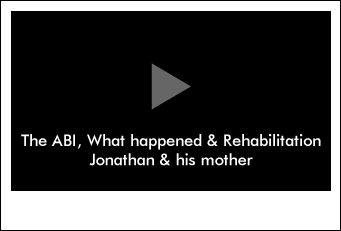- SELF STUDY MODULES
- 1. Intro to TBI
- 2. Communication
- 3. Skills for independence
- 4. Cognitive changes
- 5. Behaviour changes
- 6. Sexuality
- 7. Case management (BIR)
- 8. No longer available
- 9. Mobility & motor control
- 10. Mental health & TBI:
an introduction - 11. Mental health problems
and TBI: diagnosis
& management - 12. Working with Families
after Traumatic Injury:
An Introduction - 13. Goal setting
- 12.0 Aims
- 12.0A Take the PRE-Test
- 12.1 Why is working with families important
- 12.2 What is the adjustment experience for families
- a) The journey
- b) The challenges
- 12.3 Principles and skills
- a) Partnering
- b) Whole of family
- c) Family reactions
- d) Respect
- e) Empowering
- 12.4 When to get help
- 12.5 Take home messages
- 12.6 Resources
- 12.7 Take the POST-Test
12.3e Principles and skills: Empowering
Principle: Empowering families
An important way that staff can empower families is by identifying and focusing upon their strengths.
When working with family members of people with traumatic injuries it is often easy to identify those family members who are struggling, or “not coping”.
The strengths perspective is a framework which moves away from focusing on problems and instead focuses on strengths and possibilities within individuals and families. Although this might seem like an easy task, it does take some practice!
It requires staff to take on an attitude which considers possibilities and opportunities, rather than barriers and challenges.
Family resources, talents, knowledge, and motivation are brought to the fore, and families are viewed through a “resilience-lens”, rather than a lens which focuses on labels and problems.
This does not mean that pain is not acknowledged or seen as real, but that in the midst of difficulty and challenge, strengths and a family’s capacity are noticed and drawn out.
Some important factors for using a strengths-based approach with families are to:
- Recognise that all families have strengths, capacities and resources
- Listen to a family’s story carefully and acknowledge pain and sadness
- Look for strengths and point them out
- Ask questions which explore strengths, for eg.
- How have you managed to get to this point?
- What are your sources of support?
- What has helped you in challenging times before?
- What skills and strengths do different members of your family hold?
- How have you worked together as a family?
- Acknowledge that families are experts on their own situation
- Examples: caring, loyal, hardworking, committed, resilient, hopeful, grateful...
Review the video clip of Angela's challenges. This time look for her strengths and jot them down.
What are some of Angela’s strengths?
Angela's strengths
Insight into her own reactions and awareness of her own emotional responses.
Ability to keep lots of things organised - therapy, hospital visits, etc.
Awareness of trying to find a new life and new routine.
Knowing she needs support not to be alone.
Self respect and wanting to find her life again - joining the gym - taking care of herself.
Her partner and her working together and supporting each other in taking care of themselves.
Ability to make games/ use ideas to help cope on a day to day basis.
Good friend she can call on when needed.
Ability to ask for help when needed.
How could an understanding of these strengths be incorporated into working with Angela?
Two examples:
- From Angela’s interview it becomes clear that the family togetherness is due to much effort and commitment on her behalf. Share this with Angela, reflecting on her strength and the strength that is evident within her family. Ask Angela how the team might work best with the family to continue this family strength and bond.
- Angela spoke of a number of strategies she uses to have “time-out” and respite. Inform Angela how helpful these strategies might be for others to hear. Find ways that Angela might be able to share her tips, for e.g., providing peer support for others you are working with, or as a guest speaker. This will help Angela to see her own strength, and help her and others to recognise how important “time-out” is.

What strengths does Cheryl show in this story?
How would you build on these strengths?
The video may take a few moments to load.

